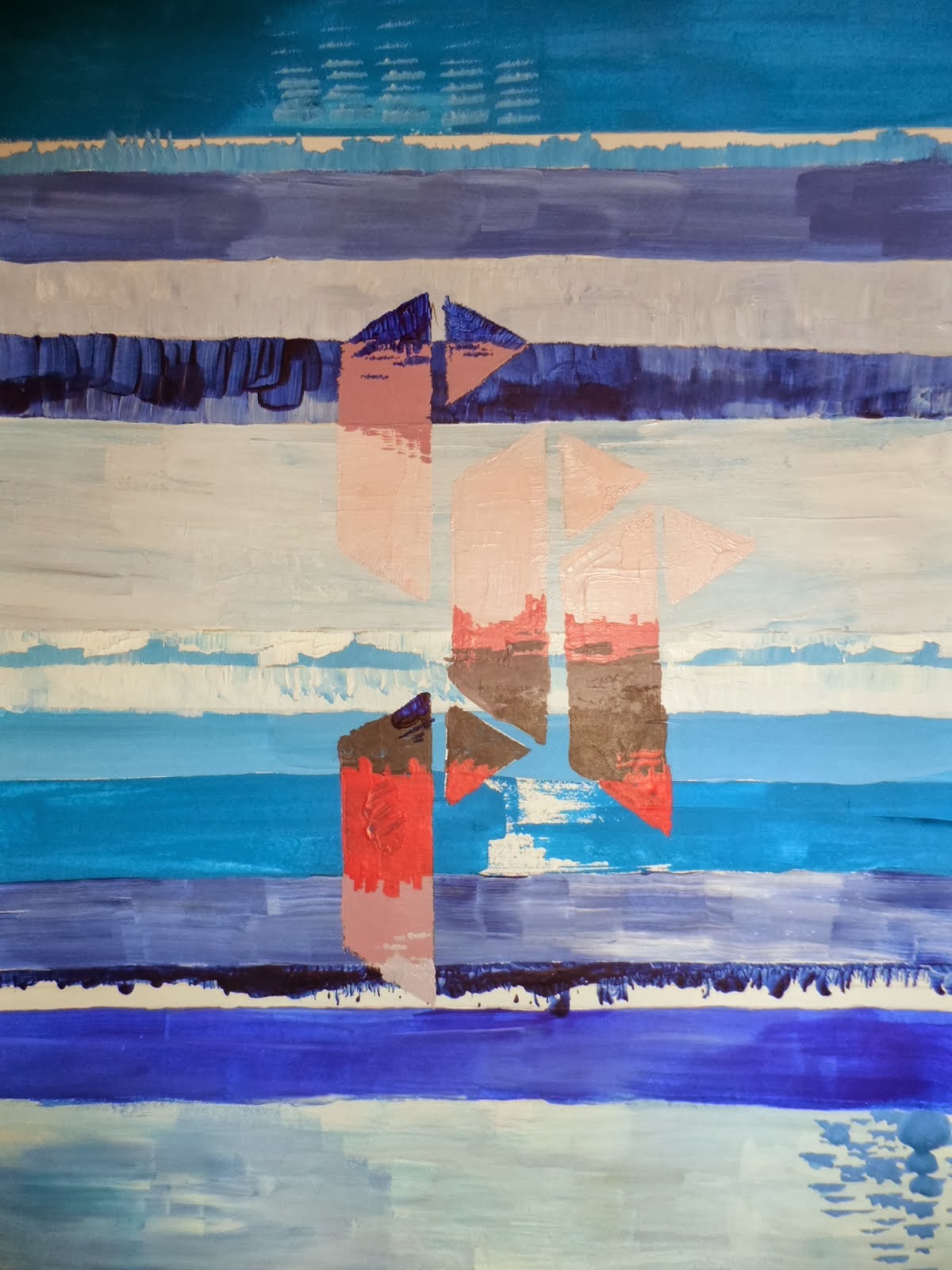The first piece of inspiration I have chosen to discuss is
taken from the London based surface designer and illustrator Leah Nelson.
Mirroring my own influences she is particularly influenced by the Art Deco
style as well as its forerunner Art Nouveau. I am especially passionate about
these art movements as they encompass an eclectic colour style and draw on
inspiration from a number of artistic sources. A common element of Nelson’s
work and my own is the association with certain elements of cubism which was
also a precursor to the Art Deco. One aspect that I really appreciate and has
influenced my work significantly is the puzzle like composition of the
geometric shapes I incorporate. In contrast to the often retro bright colour
style used by Nelson I prefer to utilise more soothing colours and softer hues
that may elicit a sense of calm.
The image on the left is taken from Leah Nelson’s patterns
collection and the image on the right is from my collection. From observing the
two, it is clear that I have taken some inspiration from her work in terms of
the geometric shapes used as well as apparent white space around the shapes. In
contrast to Nelson’s work, I find my work to be less about the rigidity and
perfection of straight lines, proportion of shapes and consistent shading. I
like the fact that my work appears more personable and involves some jagged
imperfect lines as well as varieties in shading.
My second inspiration for some of my work is Italian born
artist Francesco Lo Castro. Much of her work utilizes a variety of geometric
shapes but in contrast to Nelson the shapes always appear almost three dimensional
in nature and almost like they are moving. The colours are also indicative of a
dreamy psychedelic theme with soft blurry edges. I also like the fact that her work
has many layers and uses a variety of colours overlapping and flooding into
each other. Many of her pieces are reminiscent of an explosion of shapes and
detail. I wanted to create something that used these concepts but put my own individual
stamp on it.
Another vibrant artist that has inspired me greatly is John
Lowrie Morrison who is one of Scotland’s leading landscape painters. Like my
own work, he is passionate about the emotions that colours can convey. In many
of his paintings, blue is the key ingredient as it is in mine and he
acknowledges that this is often used to stimulate calmness and has certain
healing properties. His image on the left uses many of the same principles as I
like to adopt such as textured brushstrokes, colour and the general mood that
may be elicited from the onlooker. Even though his work is landscape and I do
not create this type of art, I do identify with his work. I feel my image on
the right does represent a sea and sky theme and although does not use any
objects such a house etc., the geometric shapes used act as a replacement.



















.JPG)
